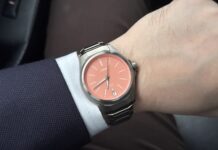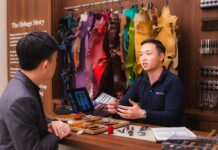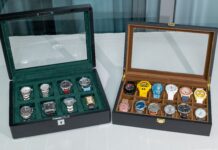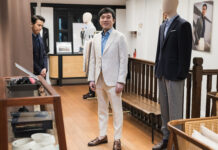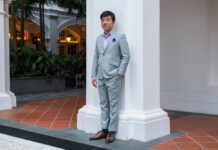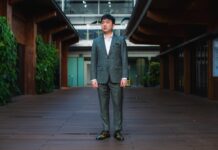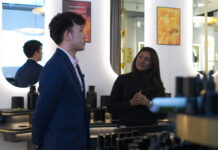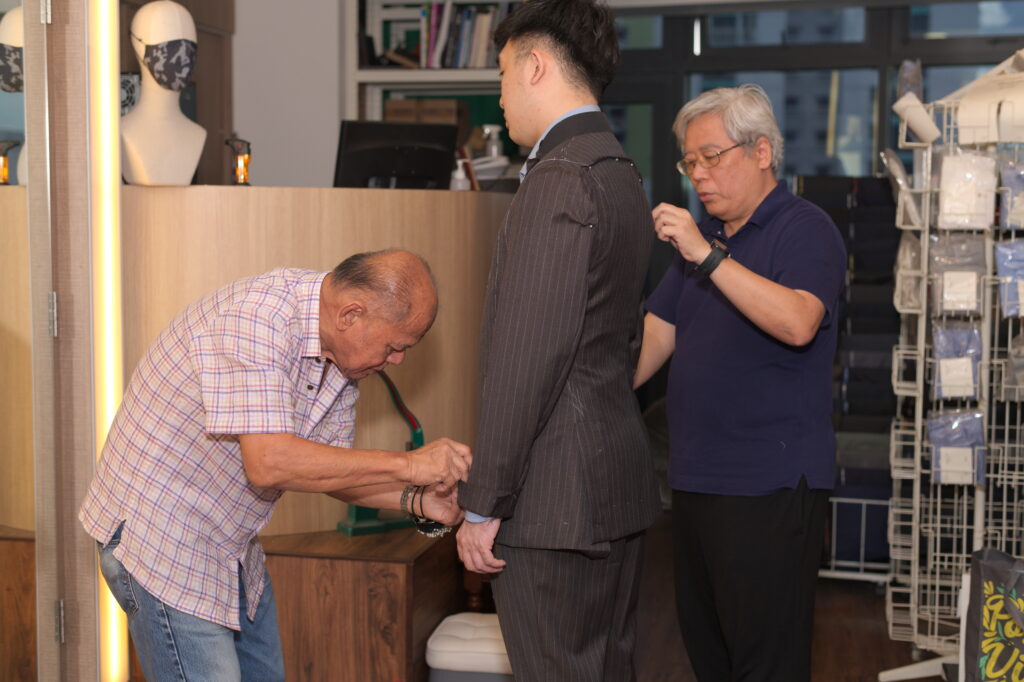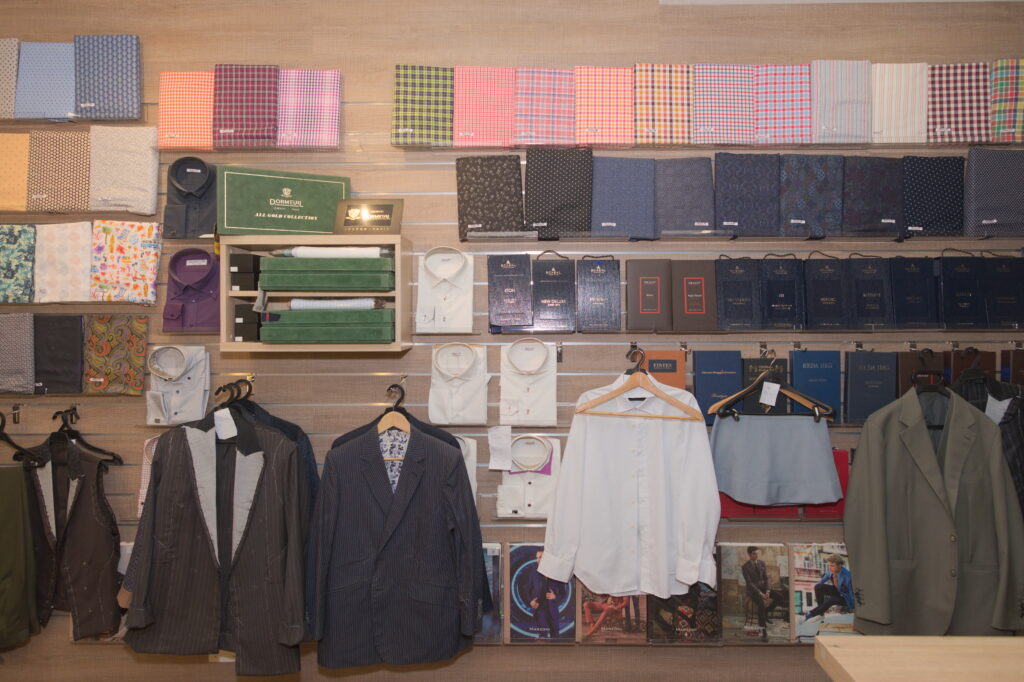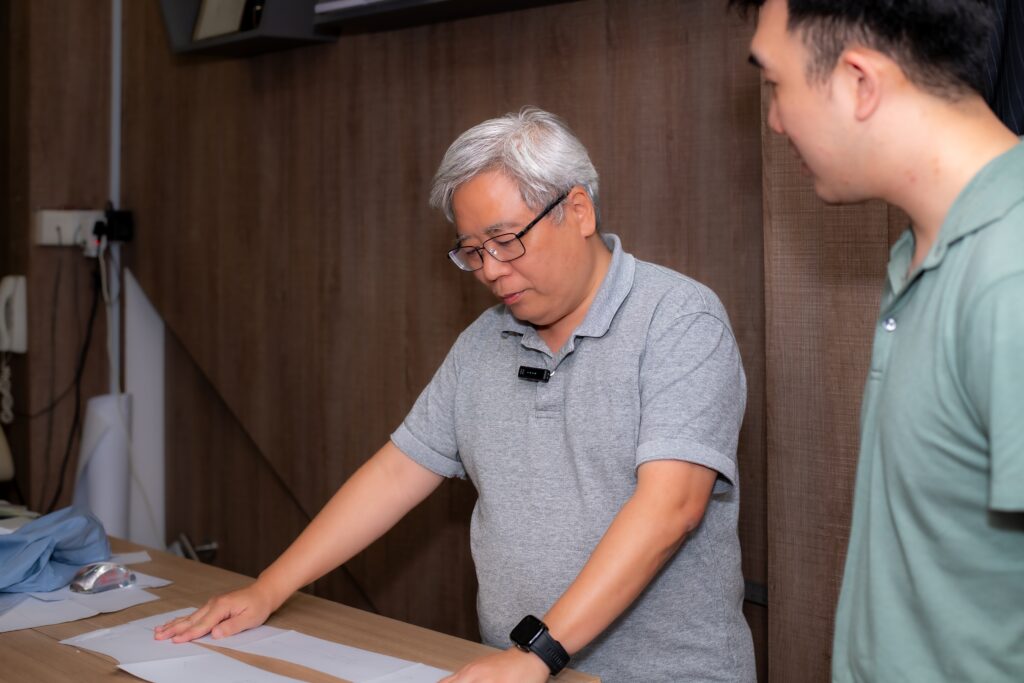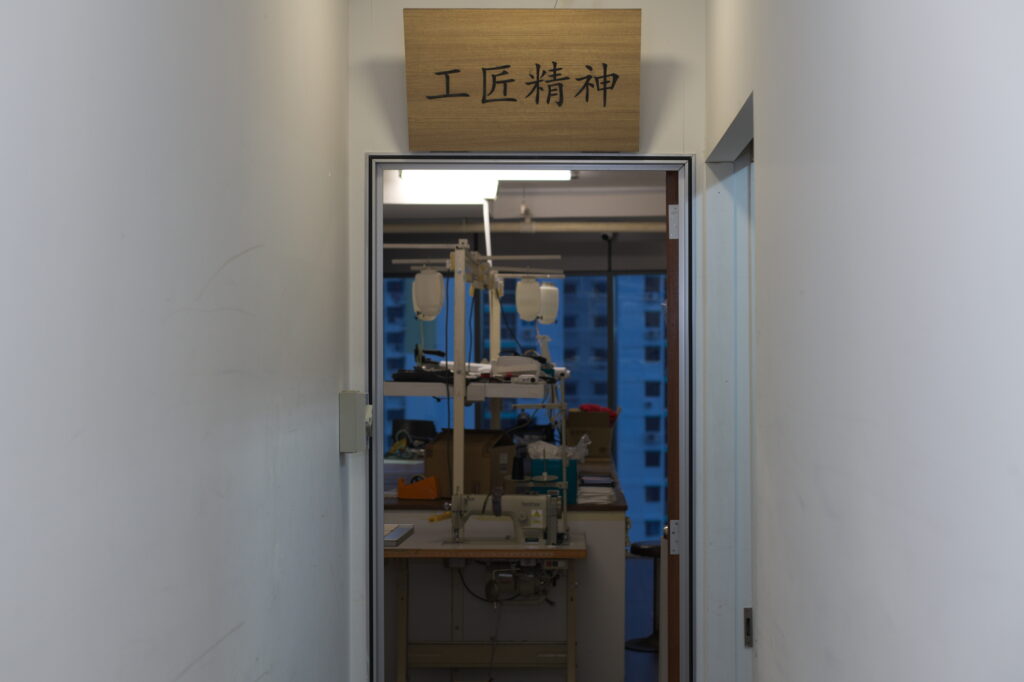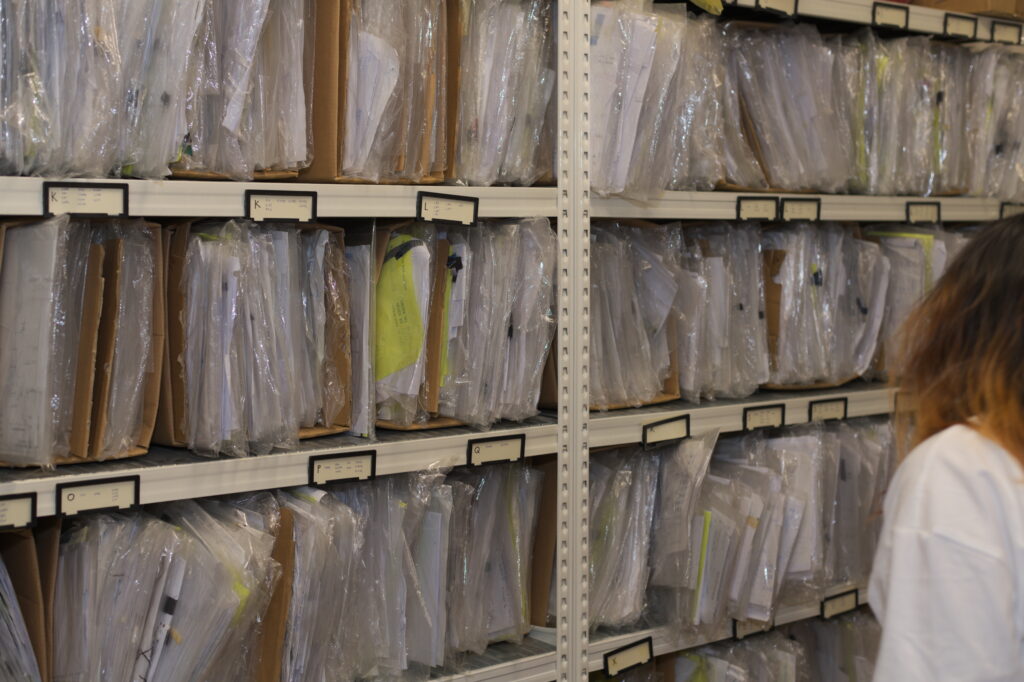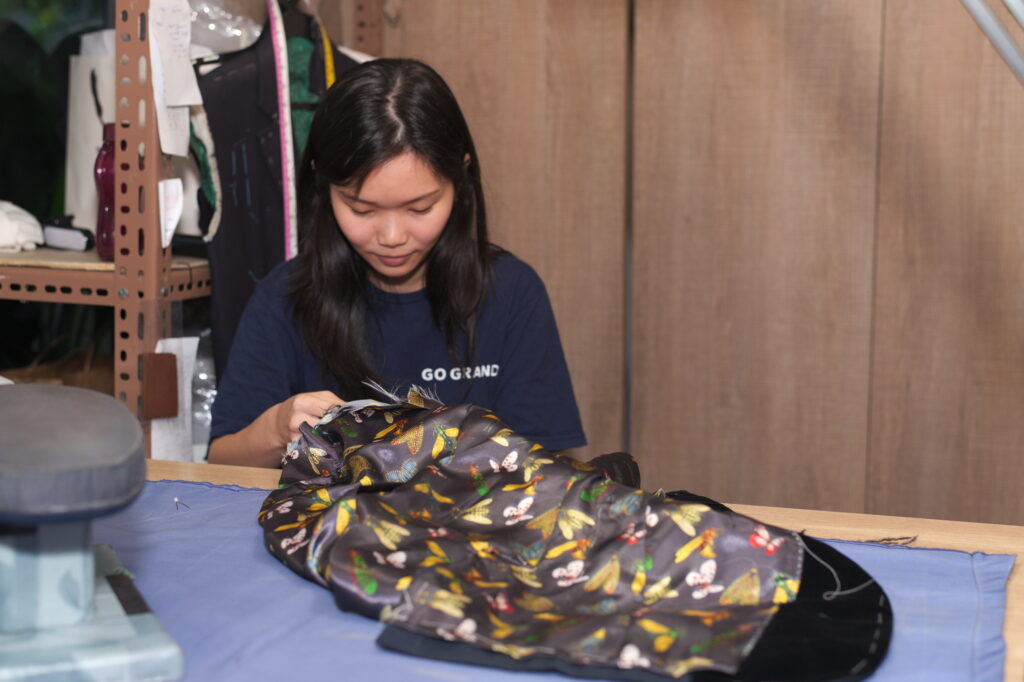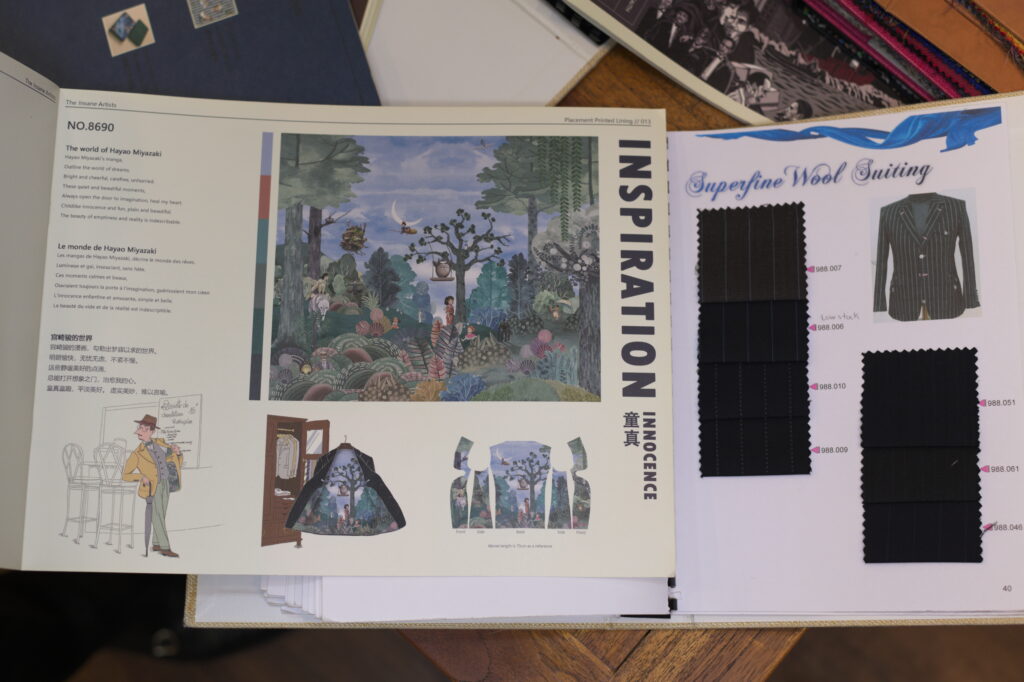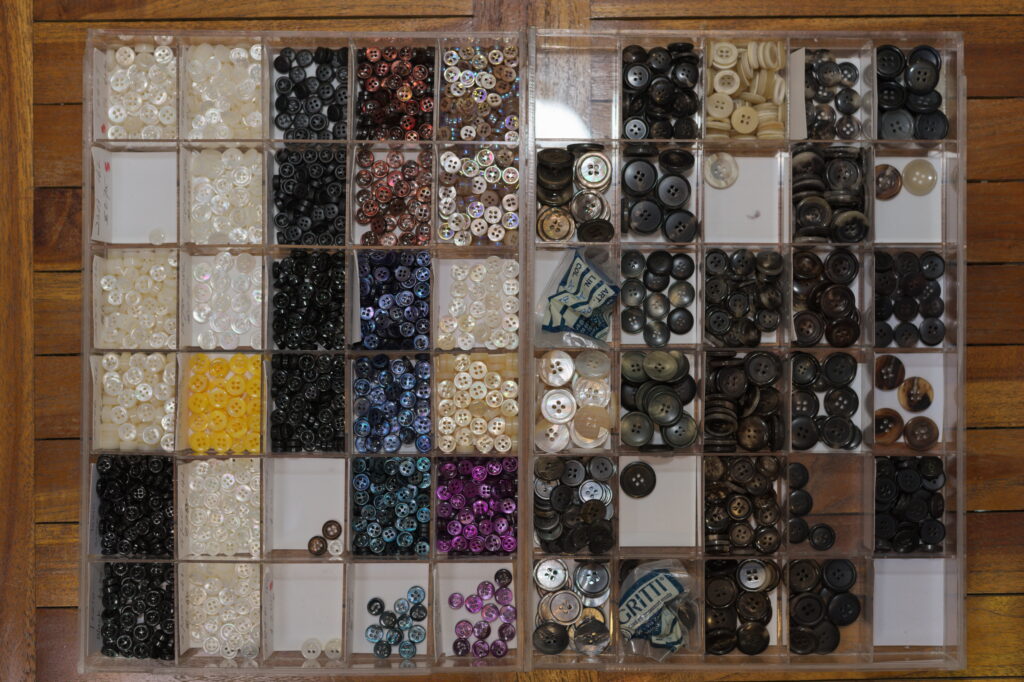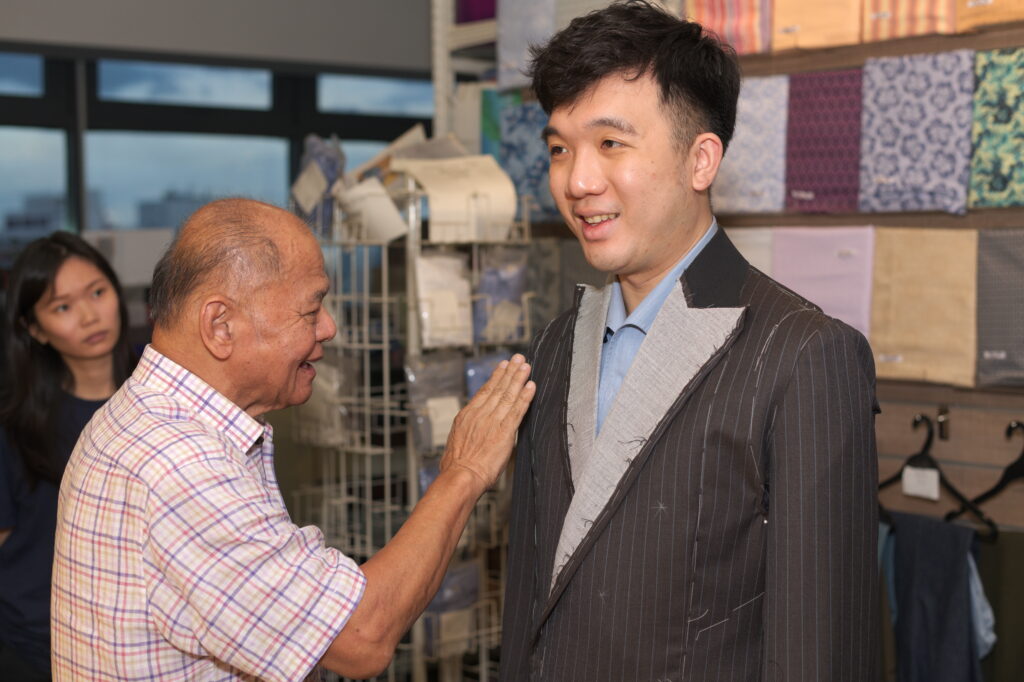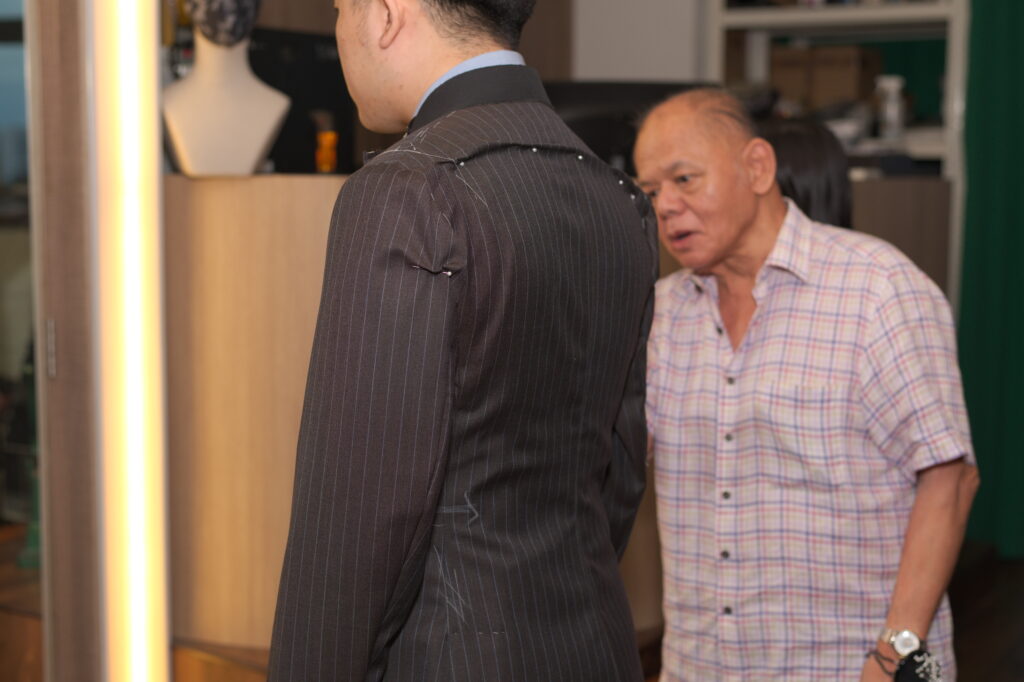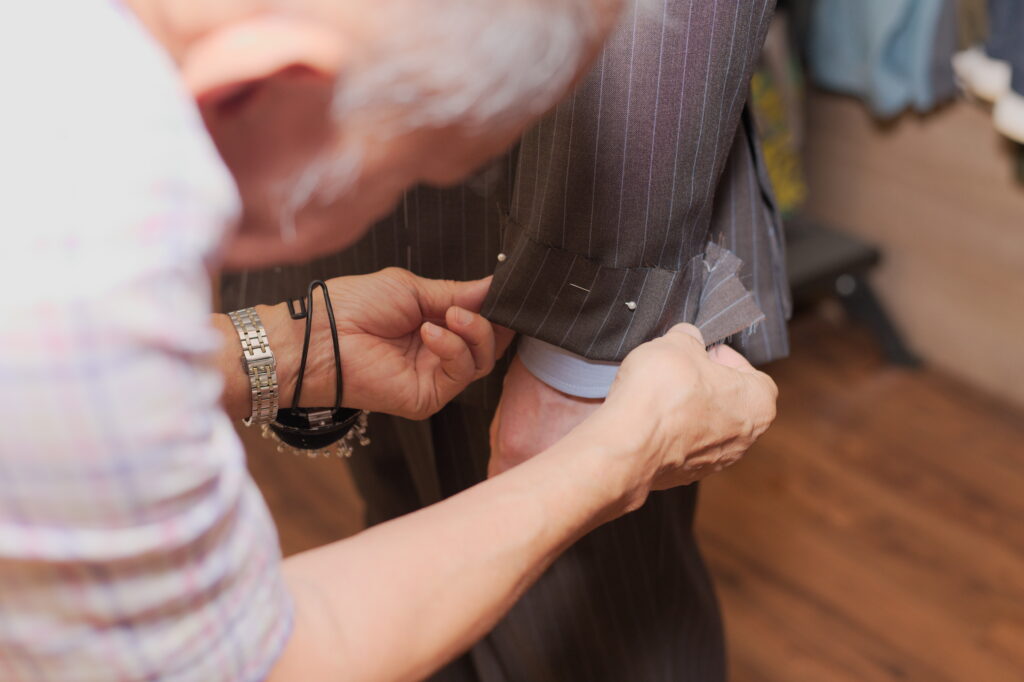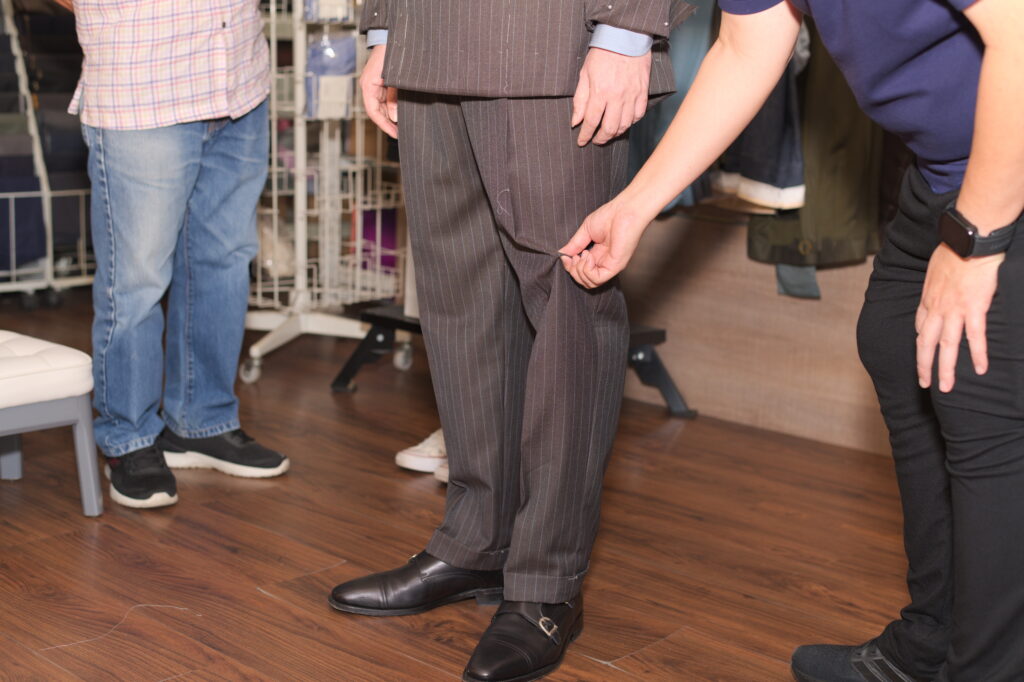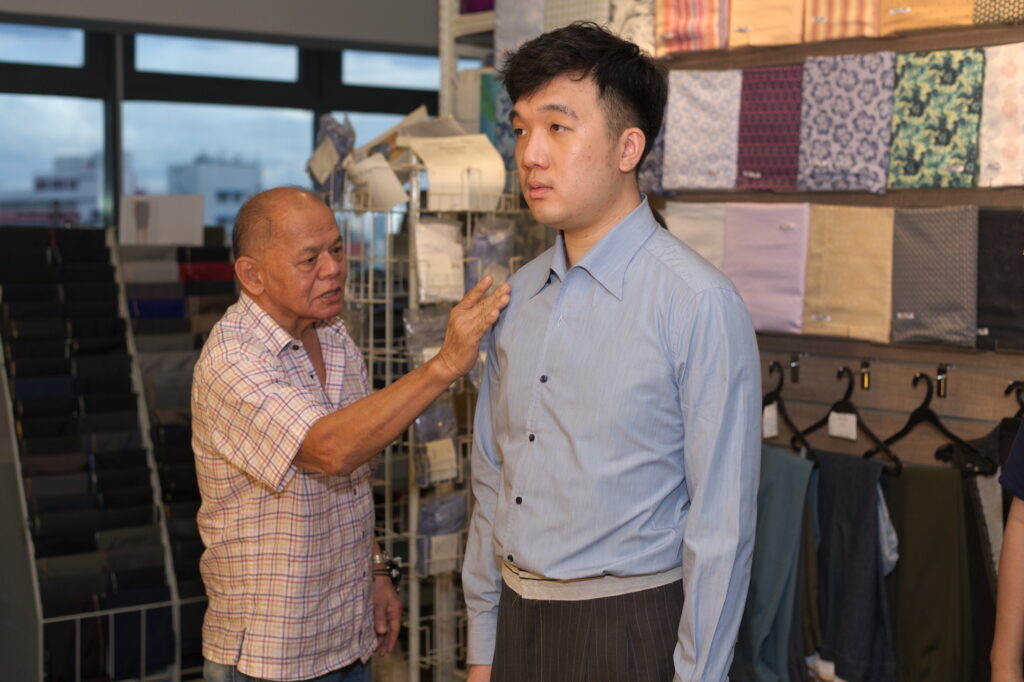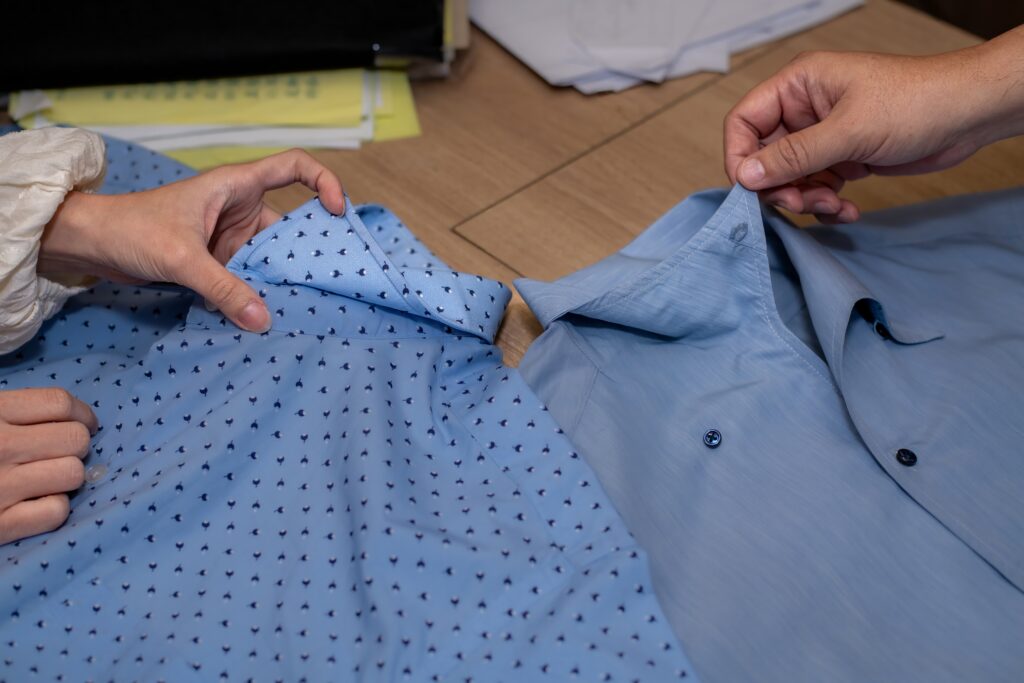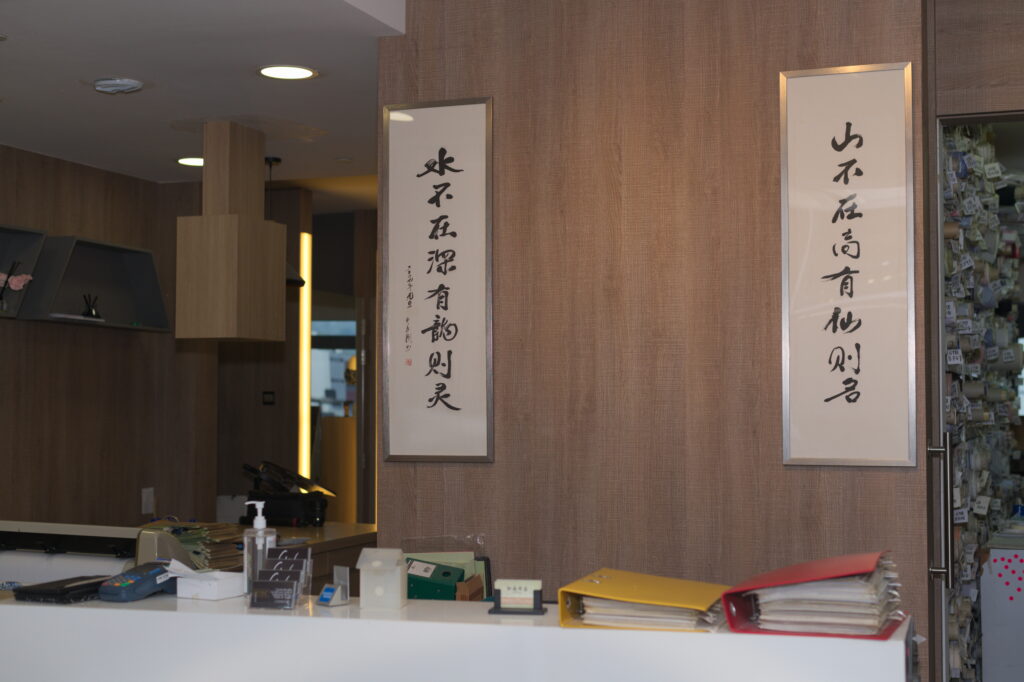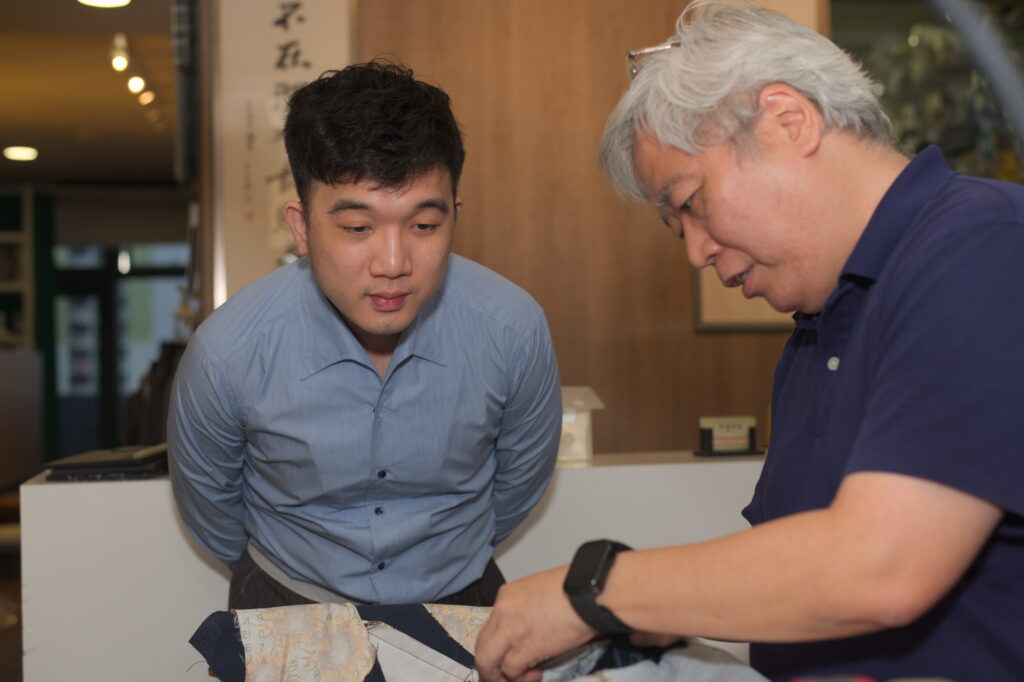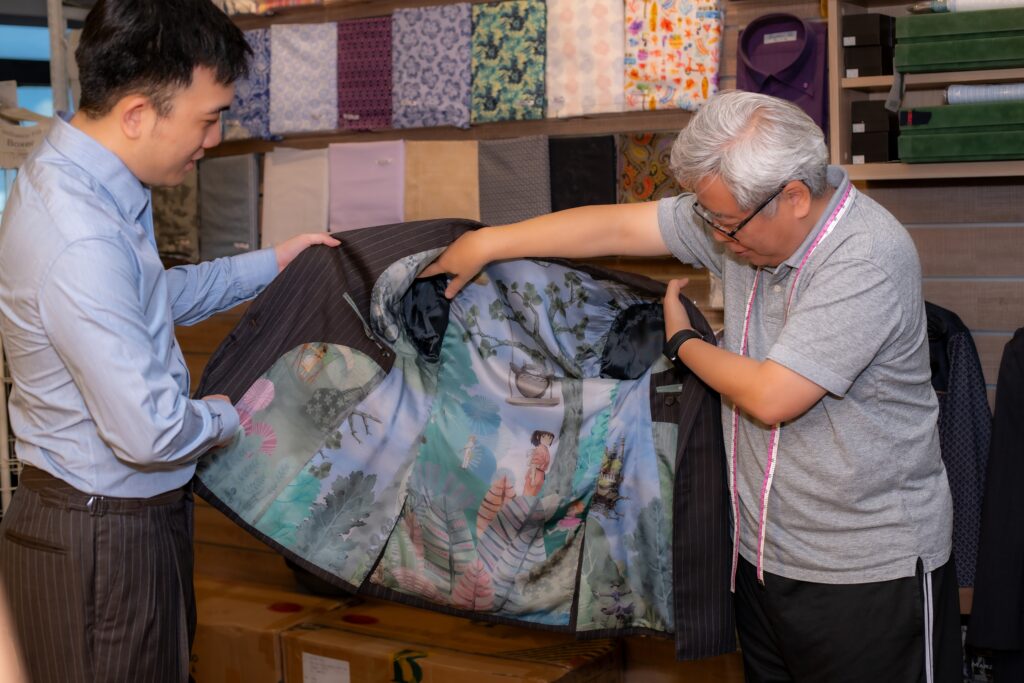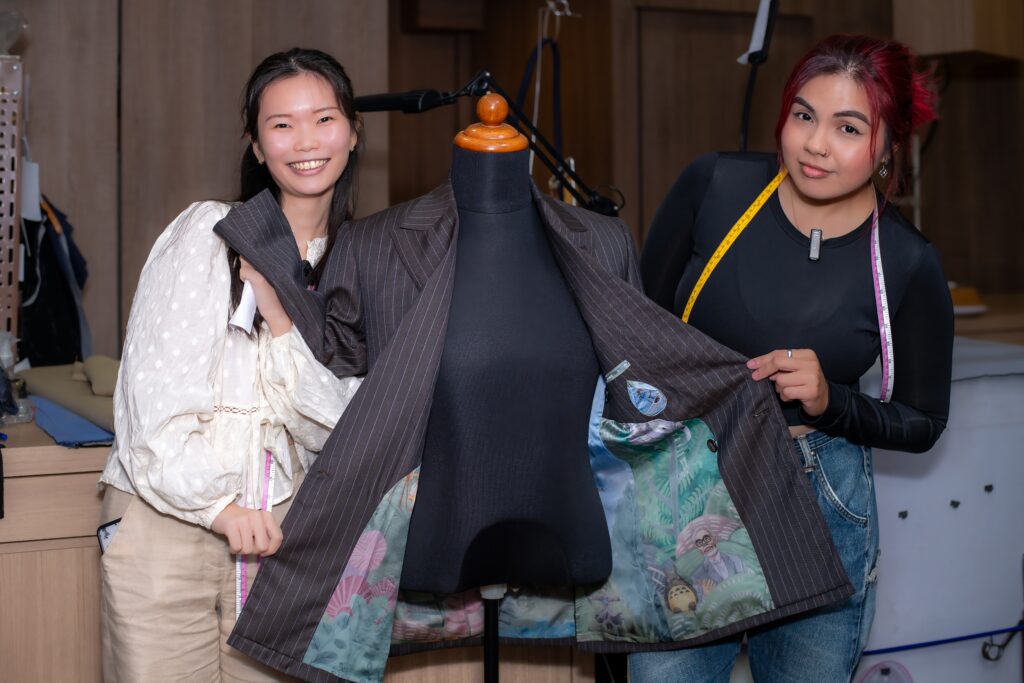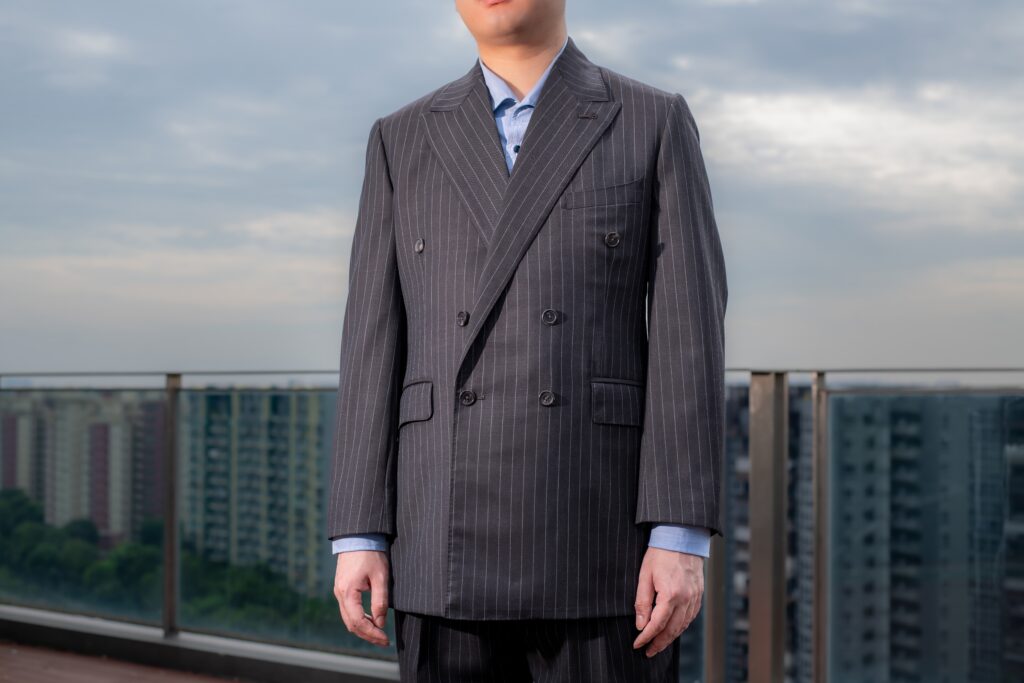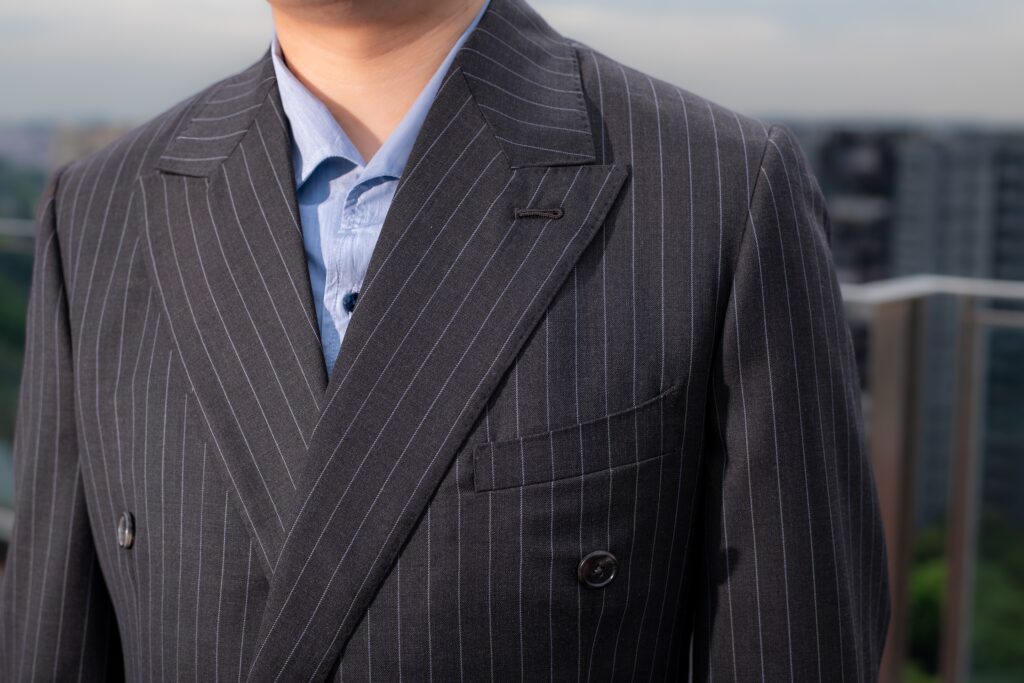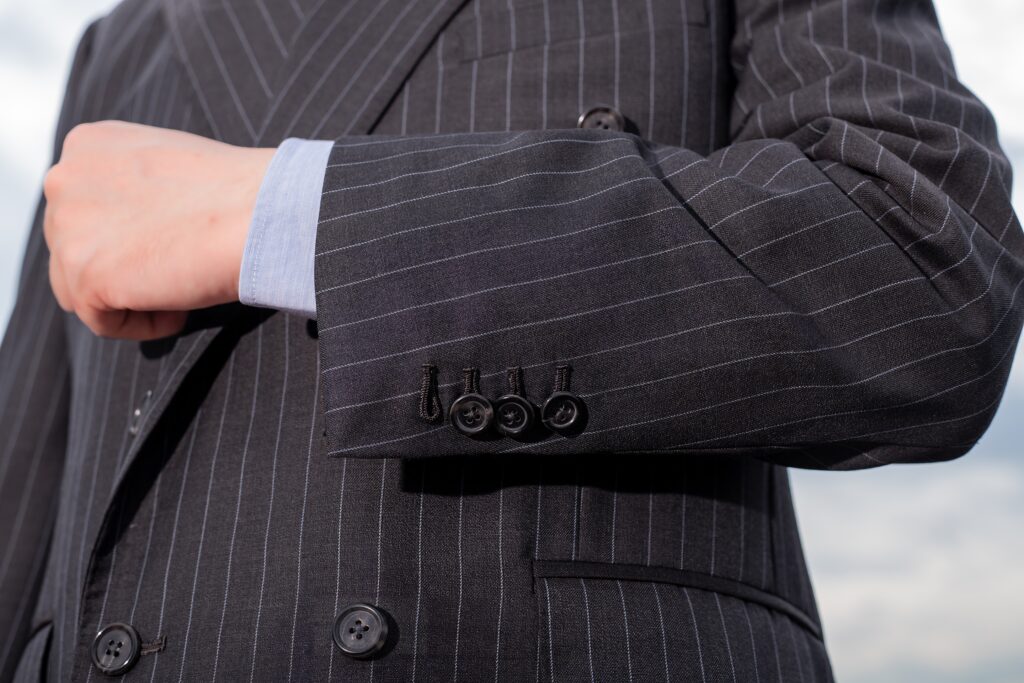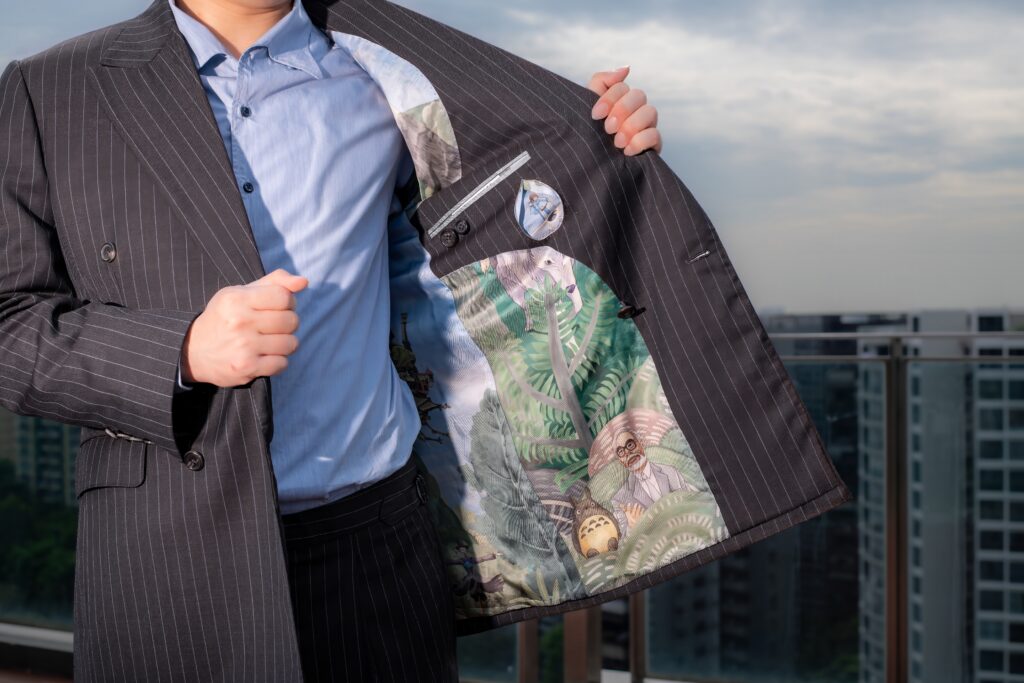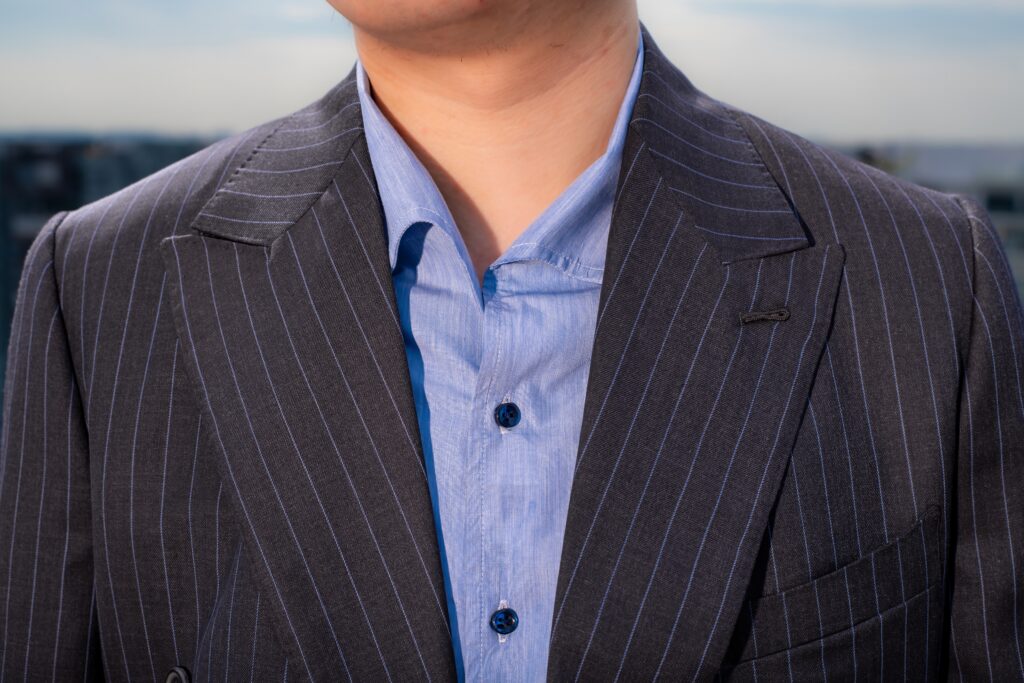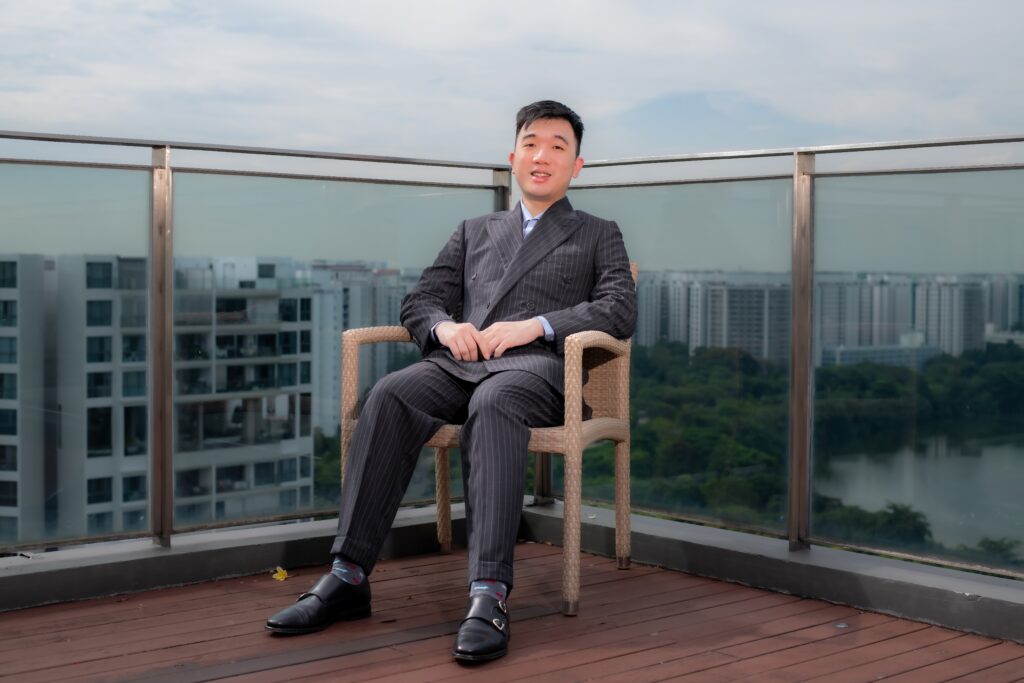Hello, everyone, and welcome to another of my articles. In this review, I’ll chronicle my experience tailoring a classic double-breasted suit from HST Tailors.
HST Tailors was one of the first tailors that I covered in my sartorial journey, but it has been some time since I last visited. As such, I decided to return to HST Tailors recently for another suit – let’s see how my experience turned out.
HST Tailors – the Video
For those interested in commissioning something with HST Tailors, I did a short interview with their young apprentices below:
HST Tailors – the Experience
It has been almost five years since I last visited HST Tailors, but the showroom remains essentially unchanged.
For those unfamiliar, HST Tailors began in 1960 as Hwa Seng Textiles, a fabric haberdashery. To this day, the company supplies textiles to tailors both locally and internationally, with rolls of fabric still lining the walls of its showroom as a testament to its heritage. I recall my first visit vividly, struck by the sheer variety of fabrics on display – an experience few tailors can offer.
HST Tailors also carries fabrics from renowned mills such as Dormeuil, Holland & Sherry, Drago, VBC and Reda. If you have a specific fabric in mind (that you can’t find at other tailors), you’ll likely find it at Hwa Seng Textiles.
When I returned to HST Tailors, I was greeted warmly by Mr. Goh, who quipped that he still had my paper patterns (from my last visit) and asked if I wanted to see them.
He then brought me up to the workshop area on the second level of the showroom. The first thing I noticed was the large signboard bearing the words 工匠精神, which translates to craftsmen’s spirit.
Inside, Mr. Goh had meticulously stored the paper patterns of all his customers over the years, sorted by alphabetical order. I was wowed by the sheer number of paper patterns – each of them was drafted and cut by hand, and a true testament to the artisan’s spirit.
Mr. Goh then showed me my paper patterns, which have been kept since my very first visit in 2018. He shared how paper patterns are essential as they highlight the idiosyncrasies in an individual’s bodies (such as my sloping shoulders and arched back), and are therefore indispensable to an actual bespoke tailoring experience. In contrast, most tailors in Singapore – even if they brand themselves as bespoke – are merely made-to-measure, as they adapt existing templates instead of creating a unique pattern for the customer.
As it turns out, Mr. Goh is currently in the process of training two young apprentices, intending to pass on all his tailoring knowledge to the next generation before he (and Ye shifu) retires. I have to commend Mr. Goh for always being open to taking in apprentices, even back in 2018 during my first visit with Ceraph. Training apprentices is no easy feat: it involves hands-on guidance, correcting mistakes, providing work opportunities, and bearing financial risk — all without any assurance of long-term loyalty.
When I asked Mr. Goh if training apprentices was worth the trouble, he replied: “如果我们这一代的不教,那谁来教?” (If those of my generation don’t teach the next, who will?). He then pointed to his two apprentices at the workbench, who were drafting and cutting a pair of trousers. He believes that without mentorship, traditional tailoring techniques — and the very spirit of craftsmanship, the 工匠精神 — may one day disappear from Singapore’s tailoring scene.
After hearing Mr. Goh’s words, I knew I had to get a new suit done. Inspired by HST Tailors’ classical style of workmanship, I decided on a mixed wool grey pinstripe fabric from one of the entry-level fabric books, in a double-breasted style. As for lining, one of the apprentices suggested a Studio Ghibli artwork, which I adored and instantly went for.
When I commented that I was surprised an “old school” tailor carried such modern and fun linings, Mr. Goh laughed and brought out a lining that featured Sun Wukong, which he said was meant for a customer who was a fan of the game Black Myth: Wukong. He joked: “I hire young people, of course must also appeal to young customers mah.”
As for buttons, I opted for black horn buttons for the suit, and blue mother-of-pearl buttons for a blue shirt. The customisation process hasn’t changed much since my first visit – those interested in seeing what the process of tailoring garments at HST Tailors is like can read my first article here.
I returned three weeks later for my first fitting. This time, I was joined by Ye shifu, who oversees the basted fitting process for customers. For those uninitiated in tailoring, a basted fitting process involves trying on a skeleton jacket, held together by temporary white basting stitches. For more information on the basted fitting stage, do read this educational article here. To me, a basted fitting stage is essential to an actual tailoring experience. To quote a line from the article above: “It’s the difference between flying first class and flying on a private jet.” Not only does it contribute to a better-fitting garment, but it is also an experience to behold in itself.
During the fitting session, both Ye shifu and Mr. Goh pored over the most minor details. For example, Mr. Goh broke out a standing ruler (which most tailor shops don’t even have), and measured both the length of the trousers and the jacket, ensuring that they were equal for a balanced silhouette.
Despite being the owner, Mr. Goh remains very hands-on. Together with Ye shifu, both fussed over the basted fitting. I’ve done dozens of basted fittings in my sartorial journey, and I have to say that the fittings at HST Tailors are the most detailed and comprehensive. I attribute this to the vast experience of Mr. Goh and Ye shifu, who have over a century of experience combined.
For the first fitting, we agreed to take in the sleeves and the trousers for a more modern look. I appreciate a classic cut, but I was worried that the suit would appear too baggy, especially when viewed from the side.
Next, Mr. Goh reviewed the fit of the shirt, and was dissatisfied with how the shoulders sat. Fans of this blog will know that I have sloping and forward shoulders, which makes fitting me a tailoring nightmare. Mr. Goh spared no hesitation in cutting up the shoulder panels. For those wondering, the shirt here is made of a muslin material (not the blue twill fabric that I picked), and is used primarily in tailoring for fitting purposes.
Again, this speaks to the vast experience that Mr. Goh and his team possess. I’ve had tailors correct my sloping/forward shoulders before, but none did so on the spot. Here, Mr. Goh pinned up the shoulder panels after cutting them open, thus showing me how the shoulders of the shirt should fit on my finished garment. Most of the affordable tailors I visit (both locally and in Thailand) are unable to do so as they outsource production – here, Mr. Goh knew at a glance how to fix the issue. I believe that speaks volumes about his experience and expertise, and I can also see why aspiring tailors apply to HST Tailors for an apprenticeship under Mr. Goh.
After another three weeks, I returned to HST Tailors for my second fitting. At HST Tailors, there’s a guarantee of at least two fittings (like on Saville Row), unless the customer is on a tight timeline.
While the suit fits well, Ye shifu was dissatisfied with the fit of the back, which has always been a spot of trouble for my tailors due to my concave back. Here, Ye shifu pinned up the back to create a better drape, while also “releasing” some fabric around the waist (see the chalk marks) to mitigate the wrinkles around the arched portion of my lower back.
It goes without saying that Ye shifu employs pins and chalk – the quintessential tools of the trade – deftly to denote the necessary areas of alteration. As I mentioned in my most recent tailoring review, the charm of tailoring lies in its anachronistic, analogue touches, which also highlight the labour-intensive, artisanal nature of the craft.
Elsewhere, we also decided to shorten the trousers slightly for a more modern half-break look. The trousers already drape beautifully, but I felt a slightly shorter cut would be more aesthetic.
As for the shirt, the fit was perfect, with one of the cleanest drapes around my shoulders in recent memory. I can tell the work that was put into accommodating my asymmetrical shoulders – it literally shows.
Thereafter, Mr. Goh broke out my paper patterns again and laid them against the finished shirt, sharing that he had to do a three-part back panel to accommodate my concave back. He jested: “做你的衣服很辛苦,比别人难两三倍啊!”
Mr. Goh was also proud of the shirt’s one-piece collar, which featured an actual seamless design. He remarked that with other tailors, their one-piece collars still utilise a seam that’s hidden underneath the collar (like the left shirt in the above photo), which he felt was taking the easy way out, even if it’s not visible with the collar down. It was clear to me that Mr. Goh took pride in the craftsmanship of his garments, and is dedicated to doing things the right way, even if it’s painstaking.
Seeing Mr. Goh’s dedication to his craft reminded me of the calligraphy hung on the entrance. Hand-calligraphed by Mr. Goh’s father (who founded Hwa Seng Textiles) back on 1st January 2007, the Chinese proverb translates as: the mountain need not be high, it becomes famous as long as a deity resides there; the water need not be deep, it becomes enchanted as long as a dragon resides underneath. Essentially, it means that substance matters over style, and that it’s more important to prioritise practical value over superficial appearances.
This ethos defines HST Tailors, where there is an apparent dedication to ensuring that the garments are made to last. For example, one of the first things that the apprentices pick up is button shanking, where an elastic thread is wound around the shank and heated so it melts together and secures the button, helping to prevent the button from dropping. It’s a tedious process, but it’s done in-house at HST Tailors to increase the durability of the buttons and the overall longevity of the clothing.
I recall my first visit to HST Tailors back in 2018 – I was just starting on my sartorial journey then, and frankly didn’t know much about tailoring. Seven years on and 50+ suits later, that has obviously changed, and as such I can now better appreciate the little details that HST Tailors employ. In terms of workmanship and attention to detail, I can genuinely say that HST Tailors is in the top three of all the tailors I’ve visited to date.
After another three weeks, I returned to HST Tailors to try on the finished suit and shirt. Right off the bat, I could tell that the suit fits like a charm – look at how well the shoulders and sleeve drape.
I was also pleasantly surprised by how lovely the Studio Ghibli lining turned out. I love how the lining incorporates characters from several of Hayao Miyazaki’s iconic movies, such as My Neighbour Totoro, Spirited Away, Howl’s Moving Castle, Kiki’s Delivery Service, Princess Mononoke, and more. Mr. Goh shared that the team had to pay close attention to the alignment of the lining, so that the “main characters” take centre stage.
Given the classic inspiration of the grey pinstripe double-breasted suit, the HST team decided to include a pen pocket in the suit. I love the teardrop design, which was cut to feature Princess Nausicaä in Miyasaki’s Nausicaa of the Valley of the Wind, arguably the movie that led to the birth of Studio Ghibli. I also appreciate the light blue pipe stitching around the pen pocket, which is another lovely detail.
Mr. Goh also highlighted how the buttonholes are cut and finished by hand, and – in the case of my suit – they were finished by the apprentices. I was impressed by how clean the buttonholes were, with no fraying or loose threads. Mr. Goh has clearly trained them well.
Speaking of the apprentices, both seemed very happy with the finished suit. Shu Wen (left in the above picture) was particularly pleased, stating that it was the first time someone had picked the Studio Ghibli lining, and that she had a blast positioning the panels so that the lining would look as aesthetic as possible. It was heartwarming to see the younger generation taking an interest in tailoring, and having fun in the process – maybe bespoke tailoring need not be a sunset industry after all.
HST Tailors – the Suit
Let’s now take a closer look at the fit and workmanship of the finished suit.
Firstly, the front fits great, with the shoulders lying perfectly flat without any fabric wrinkling or bunching. Secondly, there is a slight tapering around the waist, though it’s not much given the classic cut of the suit. Thirdly, the jacket is also the right length, ending near the base of my thumb bone.
In addition, the sleeve pitch is perfect, with the sleeves draping smoothly in their entirety. It’s also of the right length, exposing about half an inch of shirt cuff. We can also see how well the trousers drape here, featuring a nice half break without looking baggy.
Mr. Goh and Ye shifu paid great attention to my back during the two basted fitting sessions, and I’m very pleased about how the back turned out. Again, my concave back (combined with my sloping shoulders) has always been the source of my tailoring woes, with wrinkles often seen in the middle back area where my back arches in. As compared to my recent Mohan’s suit, or even my previous HST Tailors suit, the back drapes much better here.
Moving on to the fabric, I was also happy with how the charcoal grey pinstripe fabric turned out. I wanted to go for a Godfathers/Sopranos style, and I felt this shade of grey pinstripe clinched that look. Interestingly, the pinstripes are light blue instead of the usual white, which gives it a more modern look. The mixed wool fabric itself – though not “branded” – felt breathable and premium on the skin. I also liked the pic stitching of the lapel as well as the Milanese buttonhole, both of which are hallmarks of quality workmanship.
Another hallmark is the lapel roll, which typically signifies a full-canvassed construction. For those unfamiliar with the term, suits generally come in three levels of construction: fused, half-canvassed, and full-canvassed, in ascending order of quality. Full-canvassed suits utilise floating horsehair canvas, which not only adds to the durability of the suit but also allows it to drape better, with more dimension. At HST Tailors, all suits are full-canvassed by default.
That being said, fused/half-canvassed suits can also have a lapel roll, if ironed and sewn correctly. The only surefire way to tell whether a suit is full-canvassed (aside from cutting open the suit) is to check the underside of the lapels. On hand-canvassed suits, there should be visible “dimples” on the bottom of the lapel, which signify the areas where the canvas is hand-stitched onto the lapel.
Suits from HST Tailors also feature functional sleeve cuffs. Otherwise known as surgeon’s cuffs, functional sleeve cuffs are also typically seen as a sign of quality workmanship.
Furthermore, I love the double-breasted look. Instead of the standard 6×2, I opted for a retro 6×1 style, where the bottommost right button fastens the jacket. Made famous by style icons like Ralph Lauren, the 6×1 is coming back into vogue, with many gentlemen appreciating how it showcases more of the lapel line and a more pronounced lapel roll. Paired with wide peak lapels, a 6×1 oozes charm and confidence.
While the exterior of the suit veers classic and conservative, the interior is fun and youthful, thus providing a nice juxtaposition. I noticed how the blue Studio Ghibli lining complements the blue shirt perfectly as well.
As always, I went with side-adjusters on my trousers, with pleats to reinforce the suit’s retro aesthetic.
I also like the subtle nature of the tone-on-tone buttons. The dark brown horn buttons and blue mother-of-pearl buttons provide a subtle elevation for the suit and shirt respectively.
As the icing on the cake, the one-piece shirt collar showcases a lovely roll that reflects the natural lapel roll of the suit. It’s a nuanced way to stand out, and also hints at its tailored provenance.
Overall, I love this classic, 6×1 double-breasted suit from HST Tailors. Firstly, it’s definitely the best-fitting suit that I’ve gotten from HST Tailors to date, and one of the best-fitting suits I’ve made in recent memory. Secondly, I appreciate the high-quality workmanship that has been poured into crafting the garments – it’s full of artisanal details. Lastly, I also like the retro Mad Men look, which I feel also reflects HST Tailors’ tailoring ethos and style. It’s a look that will never go out of style, and is made to last.
Conclusion – so HST Tailors “shiok” or not in 2025?
Returning to HST Tailors evokes a strong sense of nostalgia, as it was where I had my first proper suit made and began my journey into tailoring. Eight years later, I’m pleased to see that both Mr. Goh and Ye shifu remain as passionate and dedicated to their craft as ever. As noted in my Mohan’s review, the exceptional quality maintained by veteran tailors like them cannot last indefinitely, so it’s wise to support these lao jiao masters while they are still active. It is also encouraging to witness Mr. Goh and Ye shifu passing on their knowledge to the next generation, with young apprentices honing their skills under careful mentorship. In fact, Mr. Goh revealed that my suit was entirely measured, drafted, cut, and sewn by these apprentices. At HST Tailors, the experience transcends a typical tailor shop—it is a true homage to the timeless art of tailoring and a stronghold of craftsmanship. For those seeking an affordable Savile Row experience with classic cuts, HST Tailors is an excellent choice.
Mixed wool suits – such as the double-breasted suit I commissioned – from HST Tailors start at $1200. For my readers, HST Tailors is offering an exclusive 10% discount on all orders. Simply flash this article, or quote “WAHSOSHIOK” when making this your appointment to enjoy the discount. After the discount, my suit cost just $1080, which I believe is a very reasonable price given the high level of craftsmanship and detailed fit.
This year marks the 65th anniversary of Hwa Seng’s operation, and I sincerely hope HST Tailors continues to thrive for many years to come. While Mr. Goh and Ye shifu will eventually retire, it is my hope that one of their apprentices will carry forward their remarkable legacy. Regardless, I want to commend them for their invaluable contributions to Singapore’s tailoring landscape. Their unwavering passion for the craft is truly inspiring, and I hope this in-depth article effectively captures their 工匠精神 while shining a well-deserved spotlight on their exceptional work.
Book an appointment at HST Tailors via this link here.
Hwa Seng Textiles’ location:
#07-12 Gemini@Sims
No 2 Sims Close
Singapore 387298
Mon to Sat: 11am – 5pm
Closed on Sundays and Public Holidays
P.S: Check out The Shiok Store here – it serves as a curation of my favourite products from my favourite brands.
P.P.S: Do check out the new “Discounts!” page for exclusive discounts for Wah so Shiok readers! More brands will be added very soon – stay tuned!
P.P.P.S: If you haven’t already, do follow my social media channels on Facebook here, on Instagram here, and on Youtube here.
P.P.P.P.S Shiok is a common word Singaporeans use to express admiration or approval. As of 2016, you can find the definition of the word in the Oxford English Dictionary.

